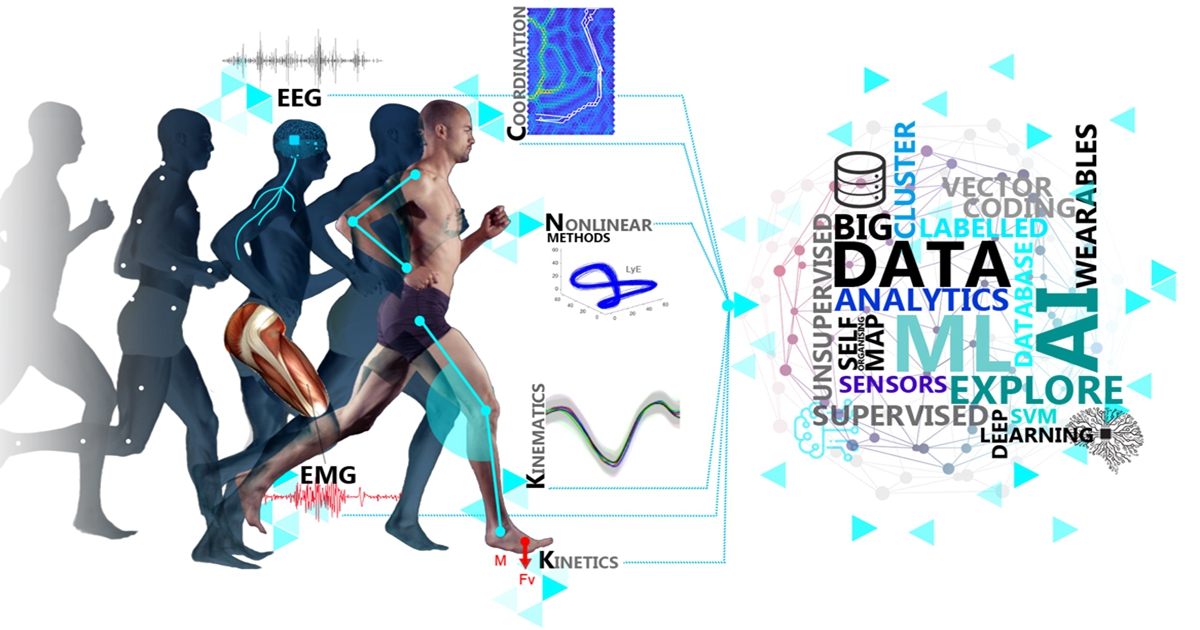Advances in the Biomechanical Analysis of Human Movement
A special issue of Applied Sciences (ISSN 2076-3417). This special issue belongs to the section "Applied Biosciences and Bioengineering".
Deadline for manuscript submissions: closed (10 February 2025) | Viewed by 17114

Special Issue Editors
Interests: biomechanics; sport biomechanics; gait analysis; posture; muscle function; kinesiology; sports injuries; exercise science; rehabilitation; movement analysis
Special Issues, Collections and Topics in MDPI journals
Special Issue Information
Dear Colleagues,
The definition of “biomechanics” originates from Ancient Greek combining “βίος” meaning “life” and “μηχανική” meaning “mechanics”, reflecting the application of mechanical principles to understand movement. Human movement is complex and relies on the integration of the central and peripheral nervous systems, sensory inputs, as well as musculoskeletal function (energy production/delivery) and co-ordination (of muscles, tendons, joints). Instrumented biomechanical evaluation provides objective outcomes that may be quantified and interpreted following an understanding of movement principles and underlying mechanisms.
Characterising “movement in context” represents the cornerstone of current biomechanical analyses of human movement, fundamental to understanding and optimising physical function and performance in a variety of settings (i.e. clinic, real-world, performance/sporting applications). Multi-disciplinary approaches to the evaluation of human movement are vital; movement specialists must select the most appropriate measurement tool whilst extracting features that are important, meaningful, fit for purpose, and robust. Biomechanists are key in this new age generation of multi-disciplinary expertise. Only by encouraging hybrid, collaborative thinking will we fuse the knowledge necessary to deliver personalised interventions that are feasible, effective and sustainable in the current healthcare ecosystem and sporting profession.
This Special Issue is devoted to celebrating recent advances in biomechanics, specifically innovative approaches for the observation, analysis and evaluation of human movement. We cordially invite contributions that encompass a broad range of biomechanical applications including advanced and innovative techniques for assessing clinical movement; characterising mobility deficits; optimising musculoskeletal function through intervention and rehabilitation; injury prevention; athletic performance; and sporting applications. Novel approaches to the acquisition of biomechanical data (i.e., markerless motion capture, multi-modal/multi-sensor techniques, approaches to handling big data, real-world and remote monitoring applications) are welcome. In particular, bespoke techniques for enhanced data analytics (i.e., non-linear, linear, machine learning, artificial intelligence) and nuanced interpretation (i.e., multi-segment or multi-system co-ordination, interrogation of multimodal and multivariate datasets) are encouraged.
Dr. Javad Sarvestan
Dr. Lisa Alcock
Guest Editors
Manuscript Submission Information
Manuscripts should be submitted online at www.mdpi.com by registering and logging in to this website. Once you are registered, click here to go to the submission form. Manuscripts can be submitted until the deadline. All submissions that pass pre-check are peer-reviewed. Accepted papers will be published continuously in the journal (as soon as accepted) and will be listed together on the special issue website. Research articles, review articles as well as short communications are invited. For planned papers, a title and short abstract (about 100 words) can be sent to the Editorial Office for announcement on this website.
Submitted manuscripts should not have been published previously, nor be under consideration for publication elsewhere (except conference proceedings papers). All manuscripts are thoroughly refereed through a single-blind peer-review process. A guide for authors and other relevant information for submission of manuscripts is available on the Instructions for Authors page. Applied Sciences is an international peer-reviewed open access semimonthly journal published by MDPI.
Please visit the Instructions for Authors page before submitting a manuscript. The Article Processing Charge (APC) for publication in this open access journal is 2400 CHF (Swiss Francs). Submitted papers should be well formatted and use good English. Authors may use MDPI's English editing service prior to publication or during author revisions.
Keywords
- biomechanics
- human movement
- sports science
- gait analysis
- linear methods
- nonlinear methods
- machine learning
- artificial intelligence
- athletic performance
- injury prevention
- rehabilitation
- wearable sensors
- data-driven insights
Benefits of Publishing in a Special Issue
- Ease of navigation: Grouping papers by topic helps scholars navigate broad scope journals more efficiently.
- Greater discoverability: Special Issues support the reach and impact of scientific research. Articles in Special Issues are more discoverable and cited more frequently.
- Expansion of research network: Special Issues facilitate connections among authors, fostering scientific collaborations.
- External promotion: Articles in Special Issues are often promoted through the journal's social media, increasing their visibility.
- Reprint: MDPI Books provides the opportunity to republish successful Special Issues in book format, both online and in print.
Further information on MDPI's Special Issue policies can be found here.






